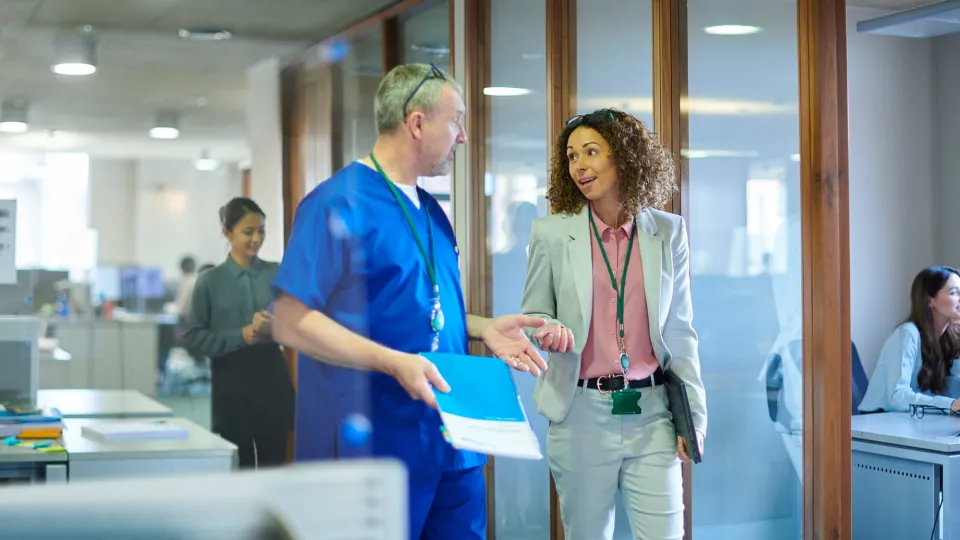Medical Administration Careers: Discovering Task Opportunities and Salaries
Medical Administration Careers: Discovering Task Opportunities and Salaries
Blog Article
Finest Practices in Medical Management for Improving Effectiveness and Lowering Costs
In the ever-evolving landscape of healthcare, the search of finest methods in clinical management is vital for boosting efficiency and curbing expenditures. By integrating innovative modern technologies such as electronic health documents and telemedicine, doctor can enhance operations and boost patient treatment. Technology alone is not a cure all; maximizing source appropriation and cultivating collective interaction among care groups are equally essential. As organizations aim to balance quality and expense, what approaches should be focused on to attain these twin goals? The solution to these questions hold the secret to a much more sustainable health care system.
Leveraging Advanced Modern Technology
The combination of electronic remedies into medical care systems has actually changed the way centers run, simplifying procedures and improving individual treatment. By systematizing client details, EHRs eliminate the requirement for difficult documents and facilitate seamless communication amongst healthcare companies.
Telemedicine is another technical advancement that has transformed person interaction. It provides comfort for both people and health care experts by making it possible for remote appointments, which can reduce the need for in-person brows through and maximize consultation organizing. In addition, telehealth systems can extend health care access to country or underserved locations, bridging voids in care shipment.
In addition, the usage of Expert system (AI) and equipment discovering is coming to be significantly prevalent in predictive analytics, permitting early detection of potential health problems and more enlightened decision-making. These modern technologies, when incorporated efficiently, can boost analysis precision and customize patient therapy strategies, eventually resulting in enhanced medical care end results and functional performance.
Optimizing Source Allowance
Effective source allowance is important for optimizing the performance of medical administration. By tactically handling sources such as workers, tools, and funds, medical care centers can significantly enhance their operational performance, improve patient outcomes, and decrease unnecessary expenditures. The initial step in optimizing resource allocation involves conducting a comprehensive assessment of current assets and identifying areas where sources might be underutilized or exhausted. This evaluation ought to be data-driven, utilizing metrics and analytics to inform decision-making procedures.
Focusing on resource allocation based upon client needs and service needs is vital. This involves straightening sources with high-demand areas, such as emergency situation care or specialized therapies, to make sure timely and reliable client care. Carrying out versatile staffing models can additionally optimize labor sources by changing personnel allocation in action to varying person quantities. Additionally, welcoming telemedicine and other technological remedies can relieve physical source constraints by offering alternate avenues for patient-provider communications.
Monetary sources must be thoroughly kept an eye on and alloted with tactical foresight to sustain both short-term functional needs and long-lasting institutional goals. This consists of investing in training programs that improve staff expertises and embracing energy-efficient practices that lower functional expenses (medical administration). Eventually, an optimized resource appropriation method promotes a sustainable health care environment that is responsive, reliable, and economically prudent
Streamlining Workflow Procedures
When health care facilities aim to enhance operational performance, enhancing operations processes ends up being a crucial focus. Reliable workflows minimize redundancy, remove unneeded actions, and boost control among healthcare experts. This strategy not only increases service distribution however also enhances the top quality of client care.

Next, technology integration plays a considerable role in enhancing process. Applying digital wellness records (EHRs) and computerized physician order access (CPOE) systems minimizes documentation, decreases human mistake, and makes certain details is accessible to all pertinent workers. In addition, leveraging telemedicine visit their website systems can enhance person consultations and follow-ups, decreasing the strain on physical framework.

Eventually, streamlined operations result in cost decreases and improved person complete satisfaction, fostering an extra sustainable health care setting.
Enhancing Data Management
Building upon structured process, optimizing data management becomes an essential element beforehand health care management. Efficient data monitoring systems are critical for keeping exact person records, boosting decision-making, and guaranteeing compliance with regulatory criteria. By implementing robust data administration solutions, health care facilities can improve the high quality of patient treatment while at the same time lowering operational costs.
One key element of improving information monitoring is a knockout post the assimilation of sophisticated electronic health record (EHR) systems. These systems promote the seamless exchange of client information across different divisions, reducing replication of examinations and minimizing mistakes. A properly designed EHR system sustains data analytics, allowing doctor to recognize trends and make notified choices relating to client care.
In addition, guarding client data is critical. Taking on thorough cybersecurity measures, consisting of encryption and regular audits, makes certain the stability and discretion of sensitive details. This not only secures clients yet additionally maintains the establishment's credibility.
Buying team training is another crucial aspect. Enlightening health care specialists on information administration techniques boosts their capability to successfully use innovation, bring about enhanced individual end results. To conclude, boosting information management through advanced technology and detailed training is vital for achieving efficiency and price reduction in clinical administration.
Fostering Collaborative Interaction
An important component in advancing clinical administration is cultivating joint interaction among healthcare specialists. Effective interaction is paramount for guaranteeing seamless client care, optimizing therapy outcomes, and lessening errors. By encouraging open discussion and coordination across multidisciplinary groups, health care companies can boost their functional effectiveness and decrease unneeded expenses.
Central to this strategy is the click for more integration of communication modern technologies such as electronic health and wellness documents (EHRs) and safe messaging platforms, which help with the quick exchange of crucial person info. These tools make it possible for doctor to accessibility and share data in real time, making certain that all employee are informed and lined up in their decision-making procedures. Normal group conferences and interdisciplinary rounds can better advertise a society of cooperation and liability.
Training programs focused on enhancing interaction skills are additionally essential. Ultimately, fostering collective interaction leads to boosted healthcare shipment and expense financial savings.

Final Thought
Integrating sophisticated technology, such as digital health documents and telemedicine, together with optimized source allocation and structured process processes, is essential for enhancing efficiency in medical administration. Reliable data monitoring and fostering joint interaction amongst medical care groups are critical for minimizing redundancies and boosting treatment top quality. By prioritizing preventive treatment and involving in quality improvement campaigns, healthcare organizations can attain significant price financial savings and enhanced patient results, therefore making certain lasting medical care delivery in an increasingly complex environment.
Report this page